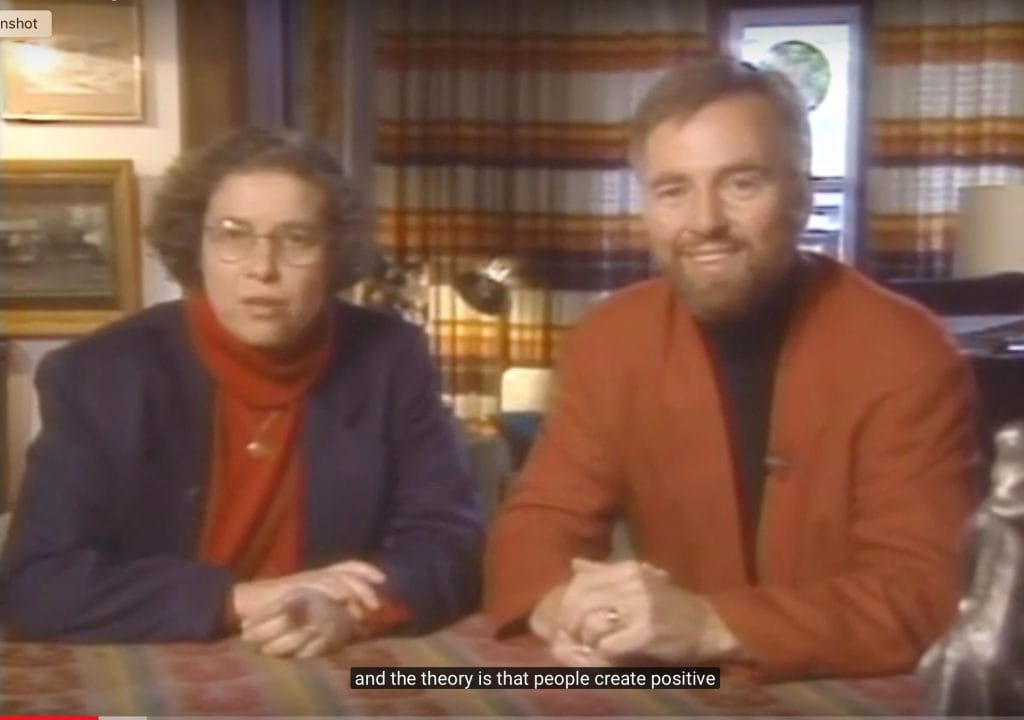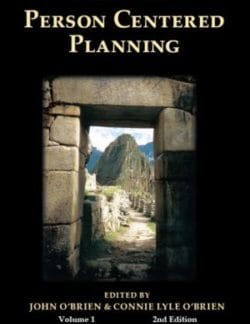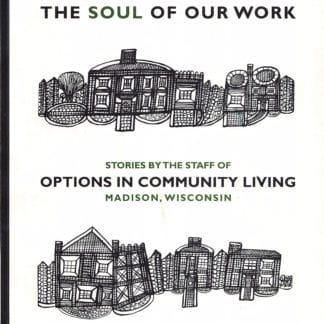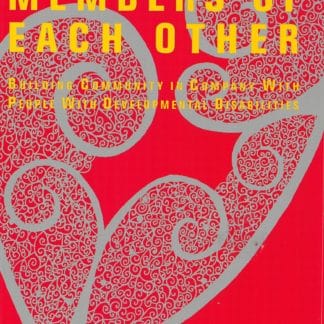Marsha Forest – Books, Articles and Videos
Jack Pearpoint – Books, Articles and Videos
Inclusion! The Bigger Picture
by Marsha Forest & Jack Pearpoint
Our key question as we initiate a new millennium is “How do we live with one another?” Inclusion is about learning to live WITH one another. Inclusion means “being with.”
Inclusion means inclusion! It means affiliation, combination, comprisal, enclosure, involvement, surrounding. It means WITH… Inclusion means BEING WITH one another and caring for one another. It means inviting parents, students and community members to be part of a new culture, a new reality. Inclusion means joining with new and exciting educational concepts (cooperative education, adult education, whole language, computer technology, critical thinking). Inclusion means inviting those who have been left out (in any way) to come in, and asking them to help design new systems that encourage every person to participate to the fullness of their capacity – as partners and as members.
Inclusion means Welcome
“I want to be included!” This simple statement is being spoken, signed, facilitated, key-boarded, whispered and shouted by people of all ages, shapes, sizes, colors and cultures. Many are making the request for themselves while others are asking for their friends or aging relatives. It is a simple request and the answer is equally easy. “Welcome! We want to include you. Come and be a part of us and our community.”
Why does this humble proposal evoke such strong reaction? Why is welcoming people labeled “disabled” seen as an activity of the “radical fringe”? Hospitality is not radical. Caring for our families and friends is not radical. In fact, hospitality and caring are foundations of our culture. So why the intense reaction about inclusion?
We believe that the Inclusion issue cuts directly to the core of our values and beliefs. Inclusion seems so simple, so full of common sense, and yet it is complex. Inclusion sets off fire works in the souls of those involved. Inclusion challenges our beliefs about humanity and cuts deep into the recesses of our hearts.
Inclusion is NOT about placing a child with a disability in a classroom or a school. That is only a tiny piece of the puzzle. Rather, inclusion is about how we deal with diversity, how we deal with difference, how we deal (or avoid) dealing with our mortality.
How else can we explain the emotions unleashed by the presence of a tiny child in a wheelchair or the presence of a teenager with down syndrome in a local school in Canada, the United States or Britain. Why do so many apparently “normal” adults lose their composure with a mere mention of including an excluded child. We conclude that the arrival of this person signals major change, and for many, change is something to fear – something fraught with danger.
However, in danger there is also opportunity for growth. Thus, schools and communities, teachers and citizens, who face their own fears and mortality by welcoming ALL children instantly create the climate for a new kind of growth. Inclusion becomes an opportunity and a catalyst to build a better, more humane and democratic system.
Inclusion does not mean we are all the same. Inclusion does not mean we all agree. Rather, inclusion celebrates our diversity and differences with respect and gratitude. The greater our diversity, the richer our capacity to create new visions. Inclusion is an antidote to racism and sexism because it welcomes these differences, and celebrates them as capacities rather than deficiencies. Inclusion is a farce when it only means “white, bright and middle class.” Inclusion means all – together – supporting one another.
A child or adult with a disability is a symbolic personal crucible where we face our feelings about differences head on. Inclusion is about how we tolerate people who look, act or think differently than so called “ordinary” people. Inclusion can be deeply disturbing for it challenges our unexamined notions of what “ordinary” and “normal” really mean. Our hidden values are paraded before us in action and reaction. Some of what we see is discomforting. The questions become very personal. How would I feel if I were unable to walk, talk or move? How would I feel if I had a child who was labeled? How do I feel about myself? How would I feel if I were disabled by an accident? And ultimately, the one common issue we all face (or deny). How do I feel about growing older? Where will I live? With whom will I associate? Will people (my family and my friends) care for me when I need help, or will they cast me aside? Will I live an endless death waiting hopelessly, helplessly, uselessly in a nursing home ward? What will become of me when I am old?
Inclusion instigates this kind of reflection. No wonder people react! Reflection is vital to everyone. Life must be examined to be lived fully. It may be painful, but the inquiry can be the beginning of building new personal futures. We owe a debt of gratitude to people who present us with this magnitude of challenge. Thus, welcoming people with challenging differences into our schools and communities is not simply for their benefit, it is for OUR health and survival.
The Three Monsters…
In talking to school and human service people internationally, three themes emerge when we discuss inclusion. Inclusion means facing what we call the three monsters .
The first monster is Fear: Will I be able to do this ? Since fear is the dominant emotion, it is important to note that the fright is OURS – not theirs. This is about OUR fears. We are afraid WE might fail. All the change literature talks about the need to learn by doing: failing quickly, noting our learning, and moving on to try again. The lesson is: face the fear dragon; stare it down. Name it and move on.
The second monster is Control: If I include this child, it will mean giving up control. I can’t do this all by myself; I will have to ask others (including students, parents, other teachers) to help. This means admitting that “I” don’t have all the answers – that “I” am not in total control. We believe it is time to give up this fantastic illusion and learn to share control. Ask for help and watch the future blossom and unfold. Cooperation and collaboration thrive as control is replaced and fades into oblivion with fear.
The third monster is Change: Inclusion is the beginning of change. “I am afraid of change therefore I won’t include people.” There is no question that inclusion means change. But change is not optional. It is here. Our choices are limited. We can grow with change, or fight a losing battle with the past. Choosing inclusion gives us the opportunity to grow with change. Our motto is: Change is inevitable; growth is optional. We recommend growth.
We believe it is imperative to meet these monsters head on — laugh and cry and talk about them, and then move into a new and better future. In fairy tales, monsters turn up at the most inopportune times – especially just when you think you have them licked. We suspect that there are more monsters to be discovered. Perhaps the next one will be the monster of complacency. “I’ve got it all under control. Relax and go back to sleep. It will be all right….” Watch out for exclusion monsters yet unnamed, they are lurking in the shadows.
Curriculum adaptation and modification are NOT the key issues for inclusion or for life. Fear, Control and Change – building new structures with new partners are the keys. The most exciting new partners will be fresh from the margins of our systems. They won’t know the rules, so they won’t be constrained by the quagmire that sucks us into the swamp. The best partners will be rich in diversity with a wealth of creative energy. Inclusion is messy by definition, but it will build new models for the next century. The values will be clear: cooperation, not competition; participation, not coercion; relationships, not isolation; interdependence, not independence; friendships, not loneliness.
The Need to Belong
Inclusion isn’t a new program or something one “does” to or for someone else. It is a deeply rooted spiritual concept that one lives. It is not a trendy product or fad to be discarded. It is not a new label – “the inclusion kids”. It is not a bandwagon. People are either included or excluded. One cannot be a little bit pregnant or a little bit included (like the myth of “inclusive” recess or lunch). One is either “in” or “out”. One either belongs or doesn’t belong. If we exclude people, we are programing them for the fight of their lives – to get in and to belong.
Most excluded people perceive that they have nothing to lose, and everything to gain in the battle to belong. Many youth consider it a matter of life and death. Teenagers join gangs because they are desperate to belong – to have meaning. Even when the gangs kill, youth join. The gangs meet their needs. Gangs are a logical response to society’s failure to make teenagers feel belonging. When our youth literally die to belong, it is a searing warning for us to look hard at the system in which we live.
Many suggest that with our society in crisis, we need to mount the barricades and defend our turf. Typical responses include: hire more police, build more jails, create more special education, administer more electro-shock, issue more behaviour modifying drugs. Control, control, control. There is another possibility. We could strive to welcome and include everyone, to build a society with more acceptance, more love, more care, more compassion.
Our world has serious challenges. We must face them honesty, analyze, learn from the past, then move forward. The need for change is not negotiable. The only question is whether we run with it, or be dragged kicking and screaming into the year 2000. Dealing with change is like running white water rapids. It is dangerous – but if you train and plan, it is the thrill of a life time. Change is here. Our societies are white water chutes. There is no portage. Our choices are limited: will we shriek with joy as we run the rapids, or will we just shriek?
Our world is rife with conflict. We must not deny it. Instead, we must strengthen our capacity and learn to live with differences and conflict while avoiding the tendency to slide into violence as a solution. Conflict is legitimate. We can agree to disagree. Resorting to violence is no longer viable. It will be our destruction.
With the advent of new technology, the critical issues of this new revolution of compassion will be to learn how to live with one another. If we are to survive, we will enter an era of “high touch” and genuine personal communication. Who better to instruct us in this new venture than those who have been excluded and rejected in the past.
Teenage suicide, random violence, drive by shootings and gangs are simply signals of a deep social malaise that won’t be cured by microwave thinking or slick packaged answers. We must think deeply. We must make tough decisions and be willing to work hard. Inclusion makes us think deeply about what we want our world to be. Who do we want as neighbors? What do we want our communities, churches, synagogues, mosques and schools to look like?
We believe communities of diversity are richer, better and more productive places in which to live and to learn. We believe that inclusive communities have the capacity to create the future. We want a better life for everyone. We want inclusion!
If we can pinpoint bomb cities half way around the globe, and send men and women into space, surely we can figure out how to live together with “liberty and justice for all”. Inclusion is truly and simply a matter of will.
Our Centre is committed to work with people anywhere and everywhere to make this value a reality. Communities which reject the richness of diversity, continue to put us all at risk – personally and internationally. Our future depends on our capacity to learn to live together without war – creating societies that build capacity with compassion for one and for all. Inclusion is about rebuilding our hearts and giving us the tools for the human race to survive as a global family.




